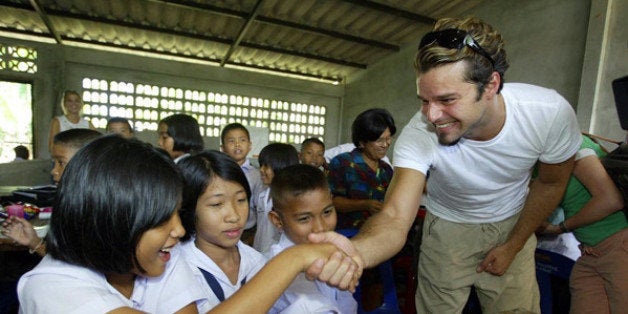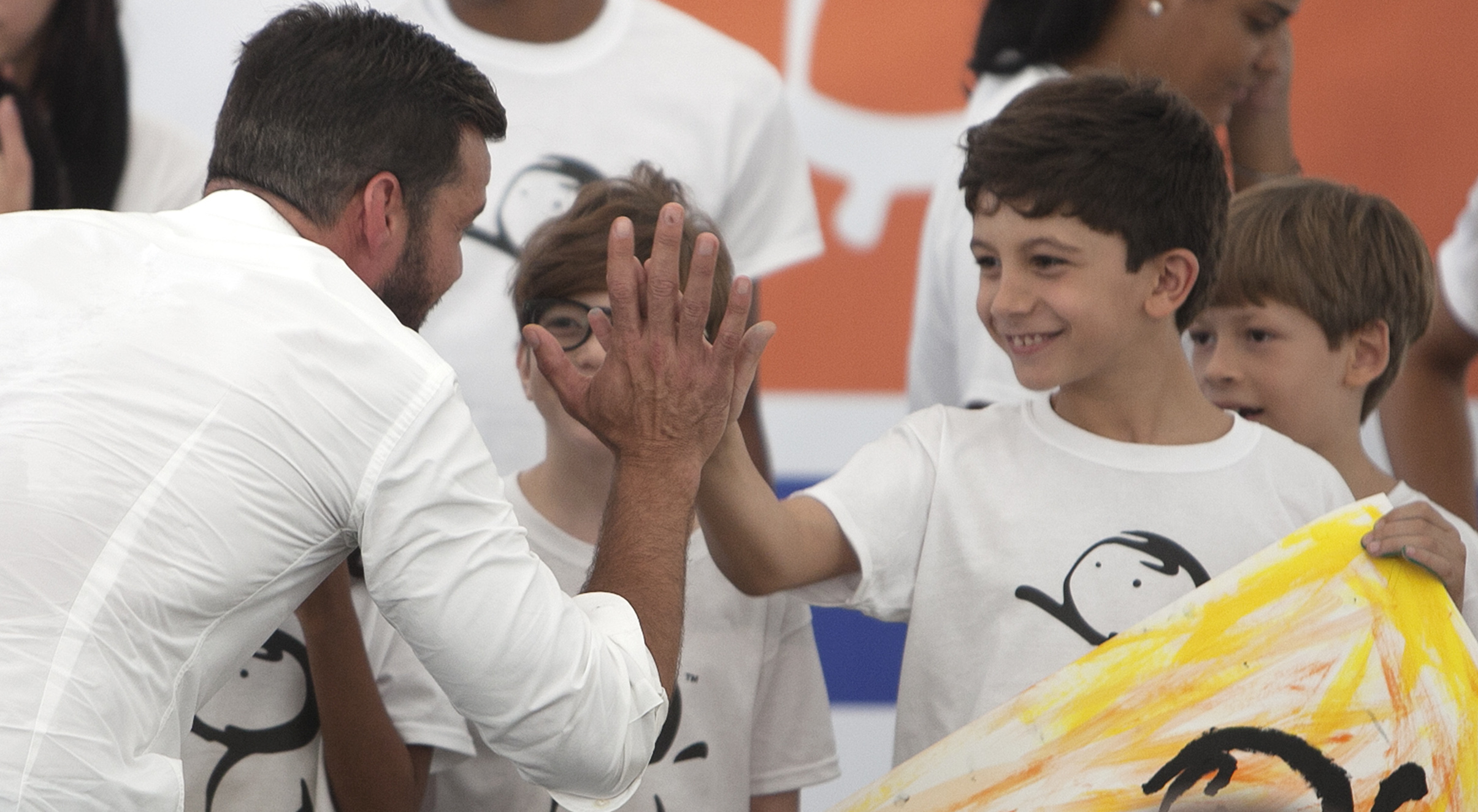
This post is part of the Global Moms Relay. Every time you share this post, Johnson & Johnson will donate $1 (per action), up to $300,000, to four causes helping improve the health and wellbeing of moms and kids worldwide: MAMA, Shot@Life, U.S. Fund for UNICEF and Girl Up. Scroll to the bottom to find out more.
My relationship with my parents has always been good. As a little boy, they would worry about whether I had enough to eat and the right food, if my vaccines were up to date, safety on the bike and the possible danger of a lurking stranger. In other words, they would take all the precautions one could think of to keep their child safe, while having all the worries that come along with being parents. As a result, I felt loved, cared for and valued.
Over the years, as I got older, our bond only grew stronger. Together, we have faced issues that come with adolescence -- the fear of the future, the pressure of the present, and the worry of disappointing. Together, we have travelled the bumpy path of growing up, and they have stood by me every step of the way and offered acceptance and love. That is what has shaped me into the man I am today, and the father I want to be for my two children.
Like my parents, and millions more like them, I want the absolute best for my two kids. They are still at a tender age where they can easily travel with me while on tour. I want them to be by my side, I want to care for them and tuck them into bed at night. I want them to feel loved, and I want them to feel safe and protected.
But I know this is a reality that escapes millions of children -- though it shouldn't.
Today, despite efforts to strengthen legislation and clamp down on human trafficking, by some estimates over a million children are trafficked every year. Behind every single number is a child, a boy or a girl much like mine or yours, or our nieces or nephews, or the kids we ourselves once were, who carry exactly the same need -- and right -- to feel loved, protected and respected.
Trafficking does away with all of that. It deprives children of their childhood, exposes them to violence, abuse and exploitation and violates their right to be kept safe, grow up in a family setting, get an education and reach their full potential. It affects every country in the world, both rich and poor. Data is difficult to come by, but in the United States alone, by some estimates, hundreds of thousands of women and children have been trafficked into the country in just a ten-year period.
The most vulnerable children are the ones most at risk of trafficking. It is children who suffer domestic violence, who lack a protective family or parental care, children living in poverty or who are impacted by conflict. For the individual child, trafficking means extreme human suffering. But put together, child trafficking hinders the achievement of establishing healthy individuals, families, communities and countries -- and slows down achieving sustainable development goals that will be set for the next 15 years.
We must turn the tide. And we must turn it so by the time 2030 rolls around, we have made strong gains. Evidence has shown that it can be done.
An effective response to child trafficking requires having a protective environment where laws, policies, regulations, services and norms are applied across all sectors and work for all children. It requires preventing vulnerabilities that make children susceptible to trafficking in the first place. In other words, addressing trafficking means addressing poverty, increasing access to education and vocational training, ensuring children are registered at birth, and halting discriminatory practices including those based on race, religion, social status, ethnicity, gender and sexual preference.
We know what it takes to help end trafficking, and with a collective will, there is a way to make it happen. As a father, I want my children to be safe from harm, and I want that very same thing for their children. We owe it to them -- and we owe it to our families.

You share, they give: Each time you 'like' or share this post via the social media icons on this post or comment below, Johnson & Johnson will donate $1 (per action) up to $300,000, to improve the health and wellbeing of moms and kids worldwide through MAMA, Shot@Life, U.S. Fund for UNICEF and Girl Up. $1 means one healthy birth in Ethiopia through UNICEF.
You can also use the Donate A Photo* app and Johnson & Johnson will donate $1 when you upload a photo for Girl Up or UNICEF, up to $100,000. You can help make a difference in seconds with the click of your mouse or snap of your smart phone.
Share this post with the hashtag #GlobalMoms, and visit GlobalMomsRelay.org to learn more. The United Nations Foundation, Johnson & Johnson, BabyCenter and The Huffington Post created the Global Moms Relay with a goal of improving the lives of women and children around the globe.
* via the Donate A Photo app for iOS and Android. Johnson & Johnson has curated a list of trusted causes, and you can donate a photo to one cause, once a day. Each cause will appear in the app until it reaches its goal, or the donation period ends. If the goal isn't reached, the cause will still get a minimum donation.